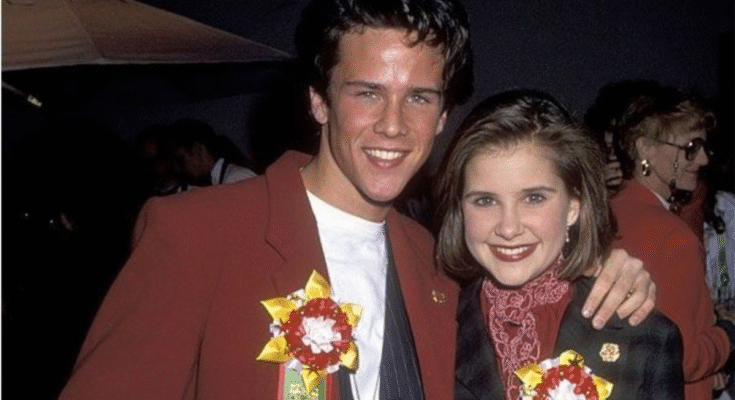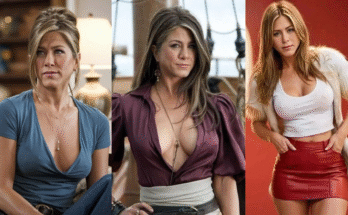How a teenage romance evolved into one of television’s most authentic portrayals of enduring love and mature friendship
Introduction: When First Love Grows Up
In the landscape of television romance, few relationships have captured the complexity of growing up quite like the bond between Steve Hale and DJ Tanner. Portrayed with genuine warmth by Scott Weinger, Steve represented something rare on family television: a first love that didn’t end in tragedy or bitterness, but instead evolved into something deeper and more meaningful than romance alone.
Steve Hale’s journey from DJ’s high school boyfriend to her adult co-parent and trusted friend spans decades of character development, demonstrating that some connections transcend the boundaries of traditional relationship categories. His story challenges the notion that first loves are meant to be outgrown, instead showing how the right people can grow alongside each other, adapting their connection to serve new purposes while maintaining the core elements that made it special in the first place.
Through both Full House and Fuller House, Steve’s character evolution represents a masterclass in how television can portray authentic human relationships—messy, evolving, and ultimately defined not by romantic success or failure, but by the willingness to show up for each other when it matters most.
Chapter 1: The Foundation of Forever
Beyond the High School Boyfriend
When Steve Hale first appeared in the Tanner household, he could have easily been dismissed as another teenage love interest destined for narrative irrelevance once the relationship ran its course. Instead, from his earliest scenes, Steve demonstrated qualities that hinted at his lasting significance: genuine respect for DJ’s family, emotional maturity beyond his years, and an ability to balance fun with responsibility.
His integration into the Tanner family ecosystem wasn’t forced or artificial—it felt organic, as if he belonged there. Steve understood instinctively that loving DJ meant embracing her entire world, including her complex family dynamics, her responsibilities as the eldest daughter, and her need to balance independence with loyalty.
What set Steve apart from typical television boyfriends was his willingness to engage with the family’s emotional reality. He didn’t try to pull DJ away from her responsibilities or compete with her family for her attention. Instead, he found ways to support her role while also encouraging her individual growth.
The Chemistry of Opposites
The relationship between DJ and Steve worked precisely because they weren’t carbon copies of each other. DJ’s natural inclination toward responsibility and planning provided perfect counterbalance to Steve’s spontaneous, fun-loving nature. He helped her remember to be a teenager, while she helped him understand the value of thinking ahead and considering consequences.
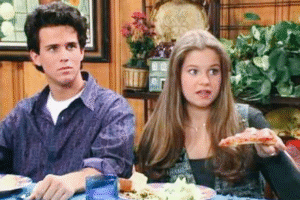
Their dynamic created a template for healthy young relationships: mutual respect, complementary strengths, and the ability to challenge each other to grow without trying to fundamentally change who the other person was. Steve never asked DJ to be less responsible, and DJ never demanded that Steve become someone he wasn’t.
This balance extended to their interactions with the Tanner family. Steve’s humor and easy-going nature provided comic relief during tense family moments, while his genuine care for DJ earned him respect from even the most protective family members. His relationship with Danny Tanner, in particular, evolved from initial suspicion to genuine mutual regard.
Chapter 2: Navigating Young Love’s Challenges
The Danny Tanner Test
Perhaps no aspect of Steve’s character development was more significant than his evolving relationship with Danny Tanner. Danny’s protective instincts created natural friction with any boy who showed interest in his eldest daughter, but Steve’s approach to this challenge revealed his emotional intelligence and maturity.
Rather than resenting Danny’s scrutiny or trying to circumvent his authority, Steve chose to engage directly and respectfully with DJ’s father. He understood that earning Danny’s trust wasn’t about being perfect—it was about demonstrating genuine care for DJ’s wellbeing and respect for the family structure that had shaped her.
Their relationship provided valuable lessons about how young men can navigate relationships with their partners’ protective parents. Steve showed patience when Danny was overly cautious, humor when tension needed defusing, and sincerity when serious conversations were required.
Growing Pains and Growing Up
Steve and DJ’s relationship faced the typical challenges of young love, but their approach to these obstacles demonstrated unusual maturity for teenage characters. When they disagreed, they talked through their differences. When misunderstandings arose, they sought clarification rather than making assumptions.
Their conflicts weren’t manufactured for drama—they reflected genuine growing pains as two young people learned to balance individual development with relationship commitment. Steve’s athletic pursuits and social life sometimes conflicted with DJ’s academic priorities and family responsibilities, but they found ways to support each other’s goals rather than competing for attention.
The relationship also showcased how first love can serve as a laboratory for learning essential life skills: communication, compromise, emotional support, and the delicate balance between togetherness and independence.
The Wisdom of Letting Go

The eventual end of Steve and DJ’s romantic relationship marked a turning point in television’s portrayal of young love. Their breakup wasn’t the result of betrayal, incompatibility, or dramatic conflict—it emerged from the recognition that they were growing in different directions and needed space to discover who they were as individuals.
This mature approach to ending a relationship provided viewers with a model for how to handle romantic transitions with grace and respect. Steve and DJ demonstrated that breaking up doesn’t have to mean breaking hearts or burning bridges—sometimes it means loving someone enough to let them grow, even if that growth takes them away from you temporarily.
Their ability to remain friends after their romantic relationship ended challenged the conventional wisdom that exes can’t maintain meaningful connections. They proved that when a relationship is built on genuine friendship and mutual respect, those foundations can support different types of connection over time.
Chapter 3: The Fuller House Renaissance
Returning as a Different Person
Steve’s reappearance in Fuller House could have been a simple nostalgia play, but the writers chose a more sophisticated approach: showing how people can change while maintaining their essential character. Adult Steve retained his humor, warmth, and loyalty, but he had gained depth, responsibility, and emotional wisdom through life experience.
His return highlighted the difference between childhood sweethearts trying to recapture the past and mature adults choosing to build something new on the foundation of shared history. Steve didn’t come back expecting to pick up where they left off—he came back as a friend willing to support DJ through one of the most challenging periods of her life.
This approach honored both characters’ growth while acknowledging the special place they held in each other’s lives. Their reconnection felt authentic rather than forced, based on who they had become rather than who they used to be.
The Evolution of Love
Steve’s role in Fuller House redefined what it means to love someone. His support for DJ as a widowed single mother demonstrated that love isn’t always romantic—sometimes it’s showing up consistently, offering practical help, and providing emotional stability during turbulent times.
His integration into DJ’s family life as a co-parent and support system proved that the most meaningful relationships often transcend traditional categories. Steve wasn’t trying to replace DJ’s late husband or compete with other romantic interests—he was simply being the kind of person DJ needed in her life at that moment.
This evolution challenged viewers to consider whether the ultimate goal of any relationship should be romance or whether the highest form of love might be the willingness to be whatever the other person needs, whether that’s a boyfriend, co-parent, friend, or something else entirely.
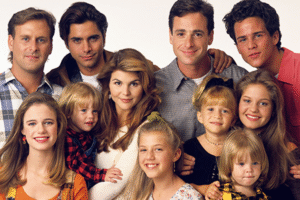
Modern Family Dynamics
Steve’s role in Fuller House reflected contemporary realities about blended families, co-parenting, and the various ways adults can support each other in raising children. His presence in DJ’s household wasn’t about romantic fantasy—it was about practical partnership in the challenging work of family life.
His relationships with DJ’s children developed naturally, based on genuine care and consistent presence rather than forced attempts to be a father figure. Steve understood that his role wasn’t to replace anyone but to add value to the family dynamic through his unique strengths and perspective.
This portrayal provided representation for modern family structures that don’t fit traditional molds. Steve and DJ’s arrangement demonstrated that families can be built on friendship, shared responsibility, and mutual support just as effectively as on romantic love or blood relationships.
Chapter 4: Lessons in Mature Love
Beyond Romance: The Deeper Connection
Steve’s character arc across both series illustrates how the deepest human connections often transcend romantic categories. His relationship with DJ evolved from teenage romance to adult friendship to co-parenting partnership, but the underlying elements—trust, respect, and genuine care—remained constant.
This progression challenged conventional narratives about relationships having clear beginning and ending points. Steve and DJ’s story suggested that some connections are meant to be permanent fixtures in our lives, even as the specific nature of those connections changes over time.
Their relationship demonstrated that emotional intimacy doesn’t require romantic exclusivity, that commitment can exist without possession, and that the people who truly belong in our lives will find ways to remain meaningful even as circumstances change.
The Art of Showing Up
Perhaps Steve’s greatest contribution to the Full House universe was his consistent demonstration of what it means to show up for people you care about. Whether as a teenage boyfriend supporting DJ through family challenges or as an adult friend helping her navigate single parenthood, Steve’s presence was always characterized by reliability and genuine investment.
His approach to relationships emphasized action over words, consistency over grand gestures, and practical support over romantic drama. Steve showed that the most meaningful way to love someone is to pay attention to what they actually need and then work to provide it, whether that’s emotional support, practical help, or simply consistent presence.
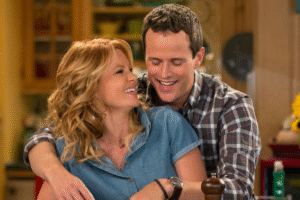
This model of love—based on service rather than possession, support rather than control—provided viewers with a healthier template for building lasting relationships of all kinds.
Redefining Success in Relationships
Steve and DJ’s story redefined what it means for a relationship to be “successful.” Their teenage romance didn’t result in marriage, but it provided both characters with essential emotional education. Their adult friendship didn’t fit conventional romantic narratives, but it offered both practical support and emotional fulfillment.
Their journey suggested that relationship success shouldn’t be measured by longevity or traditional milestones, but by whether the connection helps both people grow, provides mutual support during difficult times, and adds genuine value to both lives.
This perspective encouraged viewers to evaluate their own relationships based on substance rather than form, focusing on whether connections are healthy, supportive, and growth-promoting rather than whether they conform to external expectations.
Chapter 5: Cultural Impact and Lasting Legacy
Representation That Mattered
Steve Hale’s character provided crucial representation for young men learning to navigate relationships with emotional intelligence and respect. His portrayal challenged stereotypes about teenage boys being emotionally unavailable or focused only on physical aspects of relationships.
His respectful treatment of DJ, his genuine engagement with her family, and his willingness to prioritize her emotional wellbeing over his own desires provided a positive model for young male viewers. Steve showed that masculinity could include emotional vulnerability, family engagement, and the ability to support partners’ growth even when it conflicts with personal preferences.
His character also demonstrated that young men could be full partners in family life, capable of meaningful relationships with children and effective collaboration in domestic responsibilities. This representation was particularly valuable for viewers whose own fathers or male role models might not have provided these examples.
Influence on Television Romance
Steve and DJ’s relationship influenced how television portrayed young love, demonstrating that teenage relationships could be both realistic and aspirational. Their dynamic showed that young couples could face real challenges while maintaining respect and affection for each other.
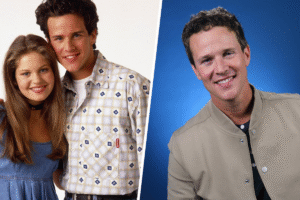
Their story also pioneered the concept of “relationship evolution”—the idea that meaningful connections can transform over time rather than simply ending when romantic elements fade. This approach provided a more nuanced view of human relationships than the typical “together or apart” binary that dominated earlier television.
The success of their storyline across two series proved that audiences were hungry for more sophisticated relationship narratives that reflected the complexity of real human connections rather than simplified romantic formulas.
Modern Relevance
Steve’s character arc remains relevant for contemporary audiences grappling with questions about love, commitment, and family structure in an era of changing social norms. His ability to maintain meaningful connections across decades and life changes provides a model for relationship resilience that many people need in their own lives.
His approach to co-parenting and blended family dynamics offers representation for increasingly common family structures that don’t fit traditional molds. Steve’s story suggests that the most important family bonds are often chosen rather than biological or legal.
His emphasis on service, consistency, and emotional support provides a counterbalance to cultural narratives that prioritize passion over partnership or individual fulfillment over mutual support.
Conclusion: The Enduring Power of Chosen Family
Steve Hale’s journey from teenage boyfriend to adult family member represents more than character development—it embodies the profound truth that the most meaningful relationships in our lives are often those that evolve with us rather than staying static. His story with DJ and the Tanner family demonstrates that love takes many forms, and the highest expression of caring for someone might be the willingness to be whatever they need at any given moment.
Through his unwavering presence across decades and life changes, Steve showed that commitment doesn’t always require romantic exclusivity, that intimacy can exist without possession, and that the people who truly belong in our lives will find ways to remain meaningful even as circumstances change dramatically.
His character challenged viewers to reconsider their assumptions about relationship success, suggesting that the most valuable connections are those that help us grow, provide support during difficult times, and add genuine joy to our daily lives—regardless of what label we assign to them.
In a culture that often treats first loves as practice rounds for “real” relationships, Steve and DJ’s story offered a different perspective: that some connections are meant to be permanent fixtures in our lives, even as their specific nature evolves. Their relationship demonstrated that the people who see us clearly, support our growth, and choose to remain present through life’s changes might be the greatest gifts we ever receive.
Steve Hale’s legacy extends beyond entertainment to provide a blueprint for building relationships based on mutual respect, consistent support, and the radical idea that loving someone means helping them become the best version of themselves—even if that person grows in directions you didn’t expect.
In the end, Steve Hale didn’t just play DJ’s boyfriend or co-parent—he embodied the possibility that some people are meant to be family, regardless of how they enter our lives or what form that relationship takes over time. His story reminds us that the most profound love stories aren’t always the most romantic ones—sometimes they’re simply the most enduring.
Explore more stories of enduring relationships and personal growth at StarConnect Network, where meaningful connections transcend traditional boundaries.
